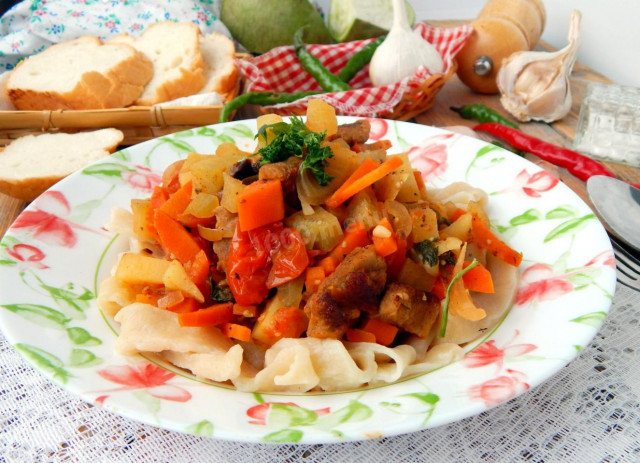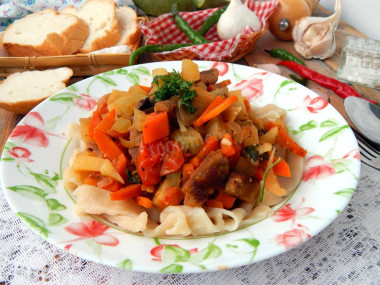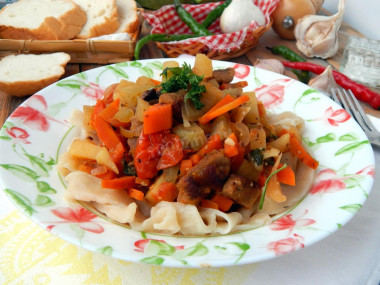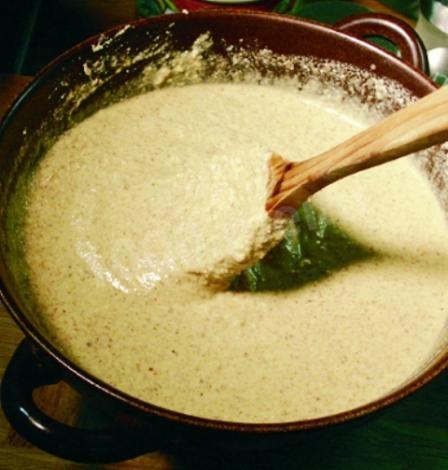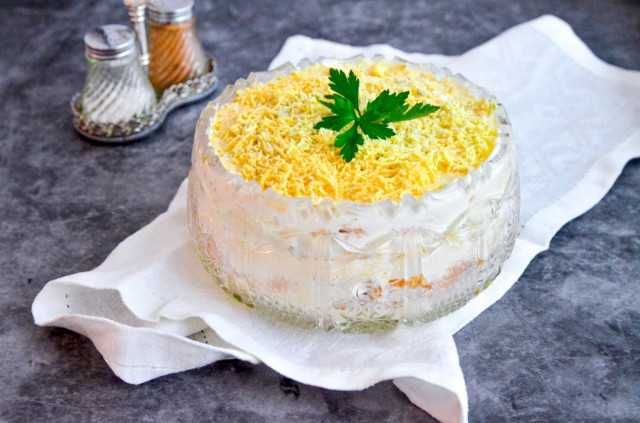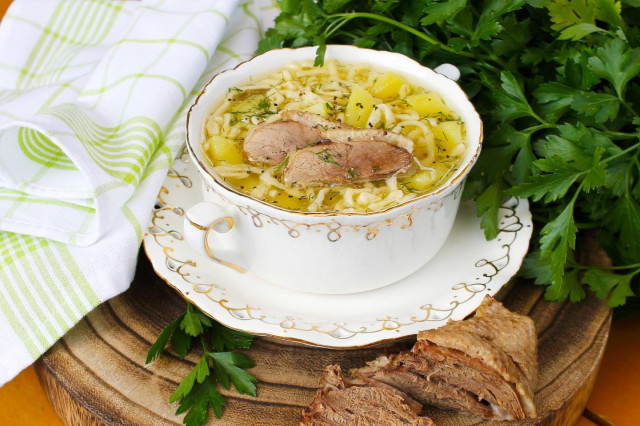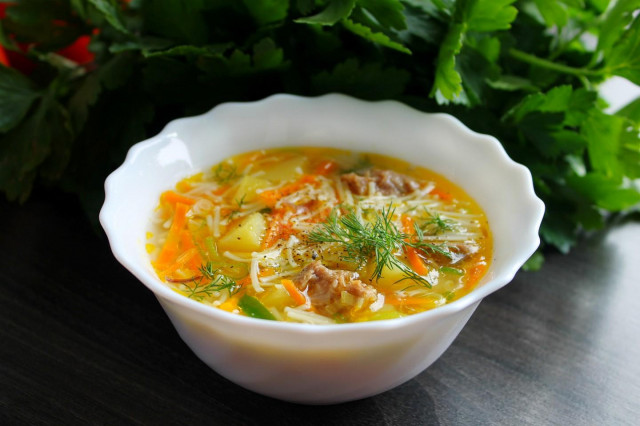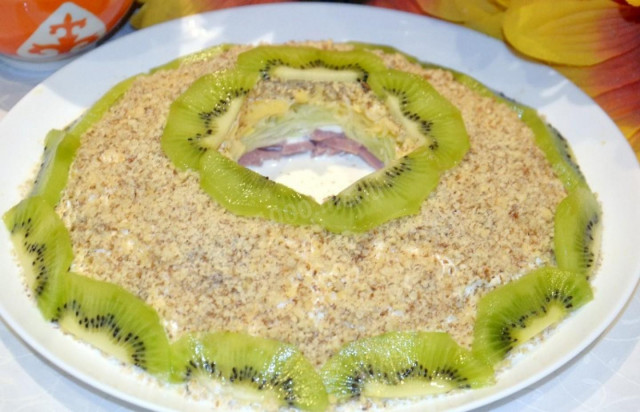Composition / ingredients
Step-by-step cooking
Step 1:
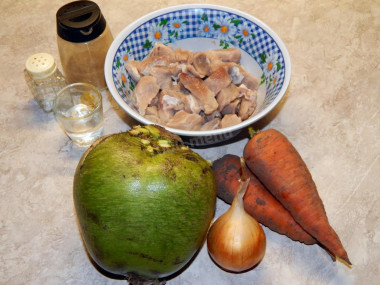
How to make lagman with radish? Prepare the ingredients. You can take any meat, but it is better to use young beef, the dish will turn out even more useful and tasty. In traditional Uzbek lagman, the dressing sauce is made from the following vegetables: radish, carrots, onions, bell peppers, tomatoes, garlic. But the composition of vegetables can be changed by choosing them to your liking. For example, add potatoes and make the dish more tender and satisfying.
Step 2:
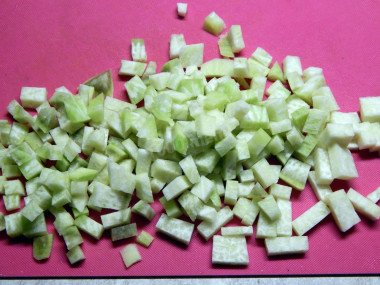
Wash the vegetables. Peel the green radish and cut into small cubes. Green radish is not bitter, it even has a slight sweetness. But if this vegetable still seems bitter to someone, you can keep the chopped radish for about half an hour in cold salted water. The bitterness will disappear.
Step 3:
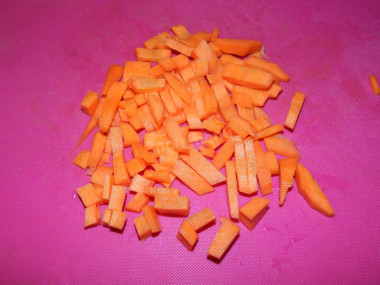
Peel the carrots and cut them into strips or cubes. Peel the onion and cut it into halves of rings.
Step 4:
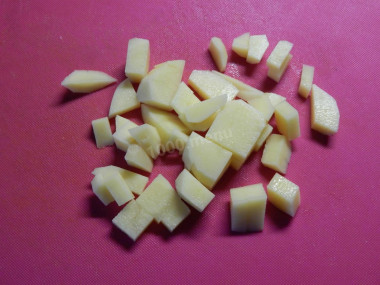
Peel and dice the potatoes. Tomatoes are also cut into small pieces.
Step 5:
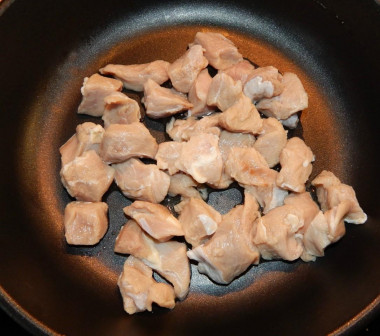
Wash the meat, cut into small cubes and rinse well again. put the meat in a dry frying pan with a thick bottom or in a cauldron. Let the excess liquid evaporate from the meat.
Step 6:
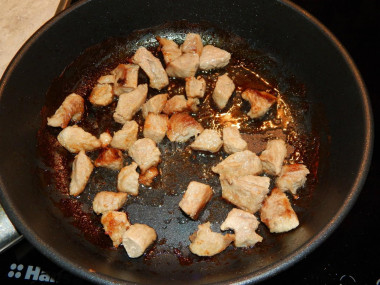
Then pour in the vegetable oil and fry the pieces of meat, turning over, until browned.
Step 7:
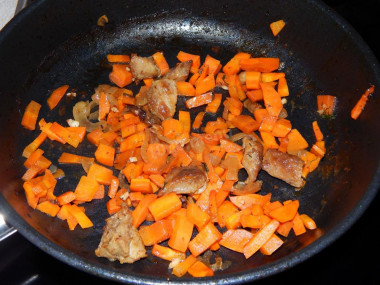
Put carrots and onions in a frying pan with meat, fry the meat and vegetables over medium heat, stirring occasionally with a spatula, until the vegetables are soft. Add spices: ground pepper, salt.
Step 8:
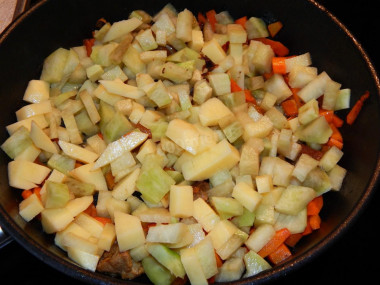
Put the radish and potatoes in a frying pan, mix. Saute the vegetables for about 10 minutes over medium heat. Then pour water into the pan so that it covers its contents by a couple of centimeters. Cover the pan with a lid and simmer over medium heat for about 25 minutes.
Step 9:
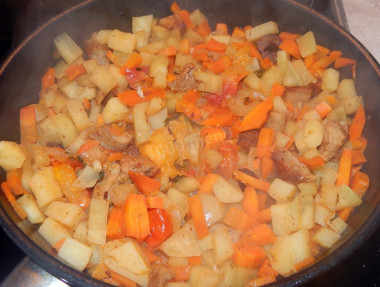
Then send the chopped tomatoes to the pan. Stir and simmer for about 15 minutes.
Step 10:
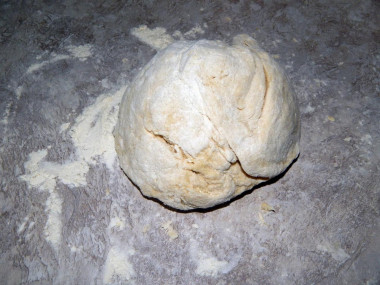
While the meat and vegetables are cooking, make a lagman. In a deep bowl, pour the sifted flour, beat in the chicken egg, add salt and pour in cold water. Knead a smooth elastic dough. Wrap it in plastic wrap and put it in the refrigerator for half an hour.
Step 11:
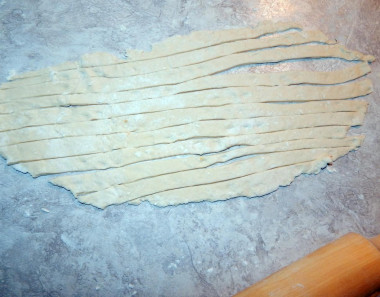
Then roll out the dough into a thin layer and cut into long strips about 1 cm wide. In a saucepan, boil salted water, cook the noodles until tender for about 15 minutes.
Step 12:
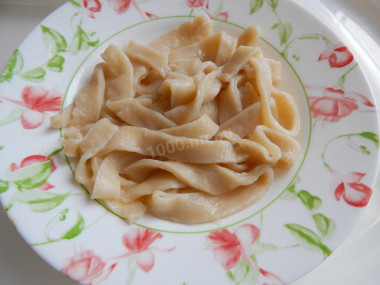
Take it out of the pan with a slotted spoon, put it in plates.
Step 13:
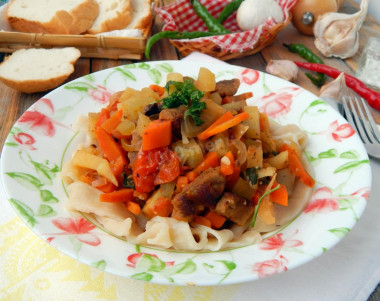
Put the vegetables and meat on top, pouring broth from the pan. Serve to the table. Bon appetit!
Be prepared for the fact that you may need more or less flour than indicated in the recipe. Focus not on the amount of flour, but on the desired consistency of the dough. To avoid mistakes, read about flour and its properties!
How to choose the perfect pot for soup, porridge or pickling cucumbers read the article about pots.
Any oils are useful only until a certain temperature is reached - the point of smoking, at which the oil begins to burn and toxic substances, including carcinogens, are formed in it. How to determine the roasting temperature and choose the best oil for frying, and which is better not to use at all, read here .
Caloric content of the products possible in the composition of the dish
- Ripe potatoes - 80 kcal/100g
- Baked potatoes - 70 kcal/100g
- Mashed potatoes - 380 kcal/100g
- Boiled potatoes - 82 kcal/100g
- Potatoes in uniform - 74 kcal/100g
- Fried potatoes - 192 kcal/100g
- Tomatoes - 23 kcal/100g
- Melted beef fat - 871 kcal/100g
- Fat beef - 171 kcal/100g
- Lean beef - 158 kcal/100g
- Beef brisket - 217 kcal/100g
- Beef - okovalok - 380 kcal/100g
- Beef - lean roast - 200 kcal/100g
- Beef shoulder - 137 kcal/100g
- Beef - ribs - 233 kcal/100g
- Beef - ham - 104 kcal/100g
- Beef - tail - 184 kcal/100g
- Boiled ham - 269 kcal/100g
- Beef corned beef - 216 kcal/100g
- Carrots - 33 kcal/100g
- Dried carrots - 275 kcal/100g
- Boiled carrots - 25 kcal/100g
- Radish - 35 kcal/100g
- Vegetable oil - 873 kcal/100g
- Salt - 0 kcal/100g
- Water - 0 kcal/100g
- Onion - 41 kcal/100g
- Ground red pepper - 318 kcal/100g
- Wheat flour - 325 kcal/100g
- Chicken egg - 80 kcal/100g

